Yamen Moghrabi | Khaled al-Jeratli
At a time when the sound of drones and missiles is no longer absent from the airspace of American bases in the region extending between Iraq and eastern Syria, the United States is reserved to respond, except for three times in which it bombed weapons depots of Iranian-backed militias in eastern Syria, according to the US Defense Department.
According to the US officials’ statements, the American unwillingness to escalate prompted Washington to absorb the repeated attacks on its bases in Syria and Iraq to prevent the outbreak of an unwanted confrontation with Iran, especially in the midst of the escalating military events during the Israeli war on Gaza, which broke out after Operation Al-Aqsa flood last October 7.
The latest information coming from Washington about the repeated attacks on its bases in Syria and Iraq was on November 14, when the Deputy Pentagon Press Secretary, Sabrina Singh, said that since October 17th through today, there have been 55 attacks on US forces, 27 of them in Iraq and 28 attacks in Syria.
As much as Washington shows a degree of “restraint” in light of the complex and sensitive circumstances that the Middle East is going through, whose effects will be directly reflected in the Syrian file, Russia may exploit these circumstances to achieve gains and push Iran to further target American bases in Syria and Iraq.
In this file, Enab Baladi discusses with analysts, experts, and fellow researchers the circumstances of the confrontation and Syria’s geographical and military role in it and examines the reasons that call for the United States not to respond and Moscow’s position.
Enab Baladi also sheds light on Iran’s goals of repeated targeting and its relationship with Israeli military operations against the Hamas movement and the Gaza Strip in occupied Palestine.
A fiery Iranian-American dialogue in Syria
After about 55 direct attacks on American bases in Syria and Iraq, claimed mostly by a Shiite military group bearing the name “Islamic Resistance in Iraq,” which Washington directly accused of being affiliated with Iran, the US only responded three times, by bombing weapons depots used by Iranian militias in Syria.
Talks about American bases in Syria and Iraq have not been absent from the press briefings of American officials since last October, the most recent of which was by the Deputy Pentagon Press Secretary, Sabrina Singh, on November 14, when she said that the US is tracking 59 US personnel who have received injuries in the TBI or non-serious categories since the attacks began. Approximately 27 personnel have been evaluated for TBI and 32 for other non-serious injuries, and that all 59 have returned to duty.
The armed group calling itself the “Islamic Resistance in Iraq” said via Telegram on November 14 that it targeted the US-controlled Koniko oil field in eastern Syria with missile strikes, followed by a similar targeting on November 15 of the American Ain al-Asad base in western Iraq.
On November 14, the Islamic Resistance in Iraq claimed responsibility for carrying out not less than four attacks on US bases in Syria.
What is the shape of the US-Iranian conflict?
Aron Lund, a fellow at Century International and Middle East analyst at the Swedish Defense Research Agency (FOI), believes that the United States is likely to continue to respond to attacks that cause harm to US troops or otherwise overstep US red lines in Syria, Iraq, or other areas.
Lund told Enab Baladi that sporadic mortar and rocket fire is nothing new and might not, in and of itself, draw a US reaction, but if there is a clear sense that Iran and its allies are escalating, the United States may want to meet that escalation in kind.
The Swedish researcher believes that both the United States and Iran and its regional allies are publicly and also non-publicly threatening each other, but they remain somewhat ambiguous about exactly when and how they would react.
The most recent speech by Hezbollah Secretary General Hassan Nasrallah was a good example of the proxy war taking place in the region, according to Lund, as he clearly linked the security of American interests in the region to Israel’s behavior in Gaza and towards Lebanon, but he did not specify exactly what Israeli behavior that may lead to a response.
US presidential elections and escalation on Gaza
The United States is witnessing presidential elections in 2024, and these elections, in turn, will be reflected in the decisions of US President Joe Biden in Washington’s internal and external files, especially since his potential rival, former President Donald Trump, is putting pressure on the economic and Iranian files.
Several American newspapers have previously highlighted the challenges facing Biden regarding the Gaza war, the possibility of opening new fronts by Iran and exploiting the current Israeli war against the Gaza Strip.
Maan Talaa, researcher fellow at the Omran Center for Strategic Studies, believes that the upcoming US administration for presidential elections will not risk entering a war of attrition with Iran in the Arab region, which may lead to a rearrangement of the US administration’s priorities at the level of foreign policy.
The US administration’s priorities today are related to ending the presence of Hamas in Gaza, trying to limit the ongoing war to this goal alone, and preventing its expansion abroad.
The researcher told Enab Baladi that the world adapted to the data presented by Washington in this regard and linked its movements in the region to limit the battles to Gaza only.
The upcoming US elections, in 2024, will also play a role in the American response, especially with former US President Donald Trump, who is trying to run in the next presidential race, exploiting the Iran file to put pressure on his rival, the current president, Joe Biden.
Brian Bennett, analyst at the American magazine Time, said on October 8 that President Joe Biden and his top aides “are scrambling to deal with twin crises unleashed by the hot war between Israel and Hamas: the possibility that American hostages may have been taken into Gaza along with Israelis during the deadly weekend assaults, and the danger that the conflict could spread in the region, potentially drawing the US closer to conflict.”
Trump previously said in statements reported by The Associated Press, on October 12, that he had succeeded in sparring America from entering into any direct war, criticizing Biden’s foreign policy.
He stated that the world suffered from chaos, bloodshed, wars, terrorism, and death, referring to the Hamas attack.
The American Security Project summarized in an article the reasons for Washington’s failure to respond to the Iranian attacks in Syria and Iraq and addressed the economic aspect, which revolved around the mechanisms that Iran possesses to retaliate by striking oil transport lines of interest to the United States, whether in Iraq or in the Kingdom of Saudi Arabia which passe through the Strait of Hormuz, which will affect oil prices globally.
Gideon Rachman, chief foreign affairs commentator at the Financial Times, wrote in an opinion column on the same matter that the Biden administration considers the threat of a broader war to be the main challenge in the crisis in the entire Middle East, referring to the events in Gaza and the escalation between Syria and Iraq.
He added, quoting a source he described as “an insider in Washington,” that all countries concerned with the same issue have thresholds that, if exceeded, will think they have to act, but no one really knows what the other party’s threshold is.
Tense situation
While the attacks on American bases in Syria and Iraq did not stop, the United States continued to push its military forces towards the Middle East, to the area of operations of the US Central Command (CENTCOM).
The responsibility of the United States Central Command includes the Middle East region, including Egypt, Africa, Central Asia, and parts of South Asia, according to what was stated on its official website.
CENTCOM’s activity priorities begin with deterring Iran, then combating “violent extremist organizations” and strategic competition, according to what it provided on its official website.
But the declared goal of the activity of American forces in the region differed from the priorities of the CENTCOM, which manages these forces; as the press secretary of the US Department of Defense, Pat Ryder spoke about four goals for America in the Middle East at the present time, the first of which is the protection of US forces and citizens in the region.
In second place, the continued flow of vital security aid to Israel comes as part of its defense against further attacks carried out by Hamas in the midst of the events that have been taking place in Gaza for more than a month.
Aron Lund, a researcher specializing in Syrian affairs, told Enab Baladi that the United States has been vague about how it will treat Iranian or Hezbollah escalation, only clarifying that it is ready to do so under certain circumstances.
He added that the situation is tense, where both sides are probing and testing each other’s red lines.
Lund believes that Iran may aim to slow the escalation to bind up Israeli forces and exert pressure on the United States while avoiding a major conflict.
The Iranian strategy itself is a form of brinksmanship that can lead to unplanned and accidental conflicts. It is a high-stakes game for all involved.
Aron Lund, a fellow at Century International and Middle East analyst
Escalation is related to determinants
Fellow researcher Maan Talaa told Enab Baladi that the development of the Iranian-American escalation in Syria and Iraq is linked to two main determinants, the first of which is that Washington does not give Tehran the opportunity to occupy itself in the region to create negotiations that reduce the burden on Gaza.
The second is to prevent Iran from dragging the battle outside the occupied Palestinian territories, and the Syrian territories are considered the candidate to be a new arena.
Talaa believes that as long as the American-Iranian tension is limited to armed skirmishes and sporadic attacks, Iran will not be able to drag the battles outside Gaza.
Since the Operation Al-Aqsa Flood, questions have been raised about Iran’s role in the operation.
Despite the official American denial through Secretary of State Anthony Blinken, during an interview with the American CNN channel on October 8, reports indicate the establishment of a joint operations room between Iran, Hezbollah, Hamas, and Islamic Jihad in Beirut.
The Wall Street Journal reported on October 8 that “Iranian security officials helped plan Hamas’s Saturday surprise attack on Israel and gave the green light for the assault at a meeting in Beirut last Monday, according to senior members of Hamas and Hezbollah, another Iran-backed group.”
“Officers of Iran’s Islamic Revolutionary Guard Corps had worked with Hamas since August to devise the air, land, and sea incursions—the most significant breach of Israel’s borders since the 1973 October War—those people said,” according to the WSJ.
Tehran did not comment on this information at the time, while the Secretary-General of Hezbollah, Hassan Nasrallah, denied the information by saying, “Iran supports the resistance factions in Lebanon and Palestine, but it does not control their decisions.”
This was preceded by a report published by the Lebanese newspaper Al-Akhbar, entitled “A joint operations room between the resistance factions; Lebanon in the battle.”
While a second file dealt with the process of transferring important files and papers from Rafic Hariri International Airport in Beirut, with the preparation of a plan to evacuate employees and workers of international organizations prepared by the security of these organizations.
The newspaper, which is close to Hezbollah, added that a joint operations room between the party, Palestinian factions, and other forces is working together, with agreement on the next steps, and linking fieldwork on the Lebanon and Gaza fronts to the situation on the ground.
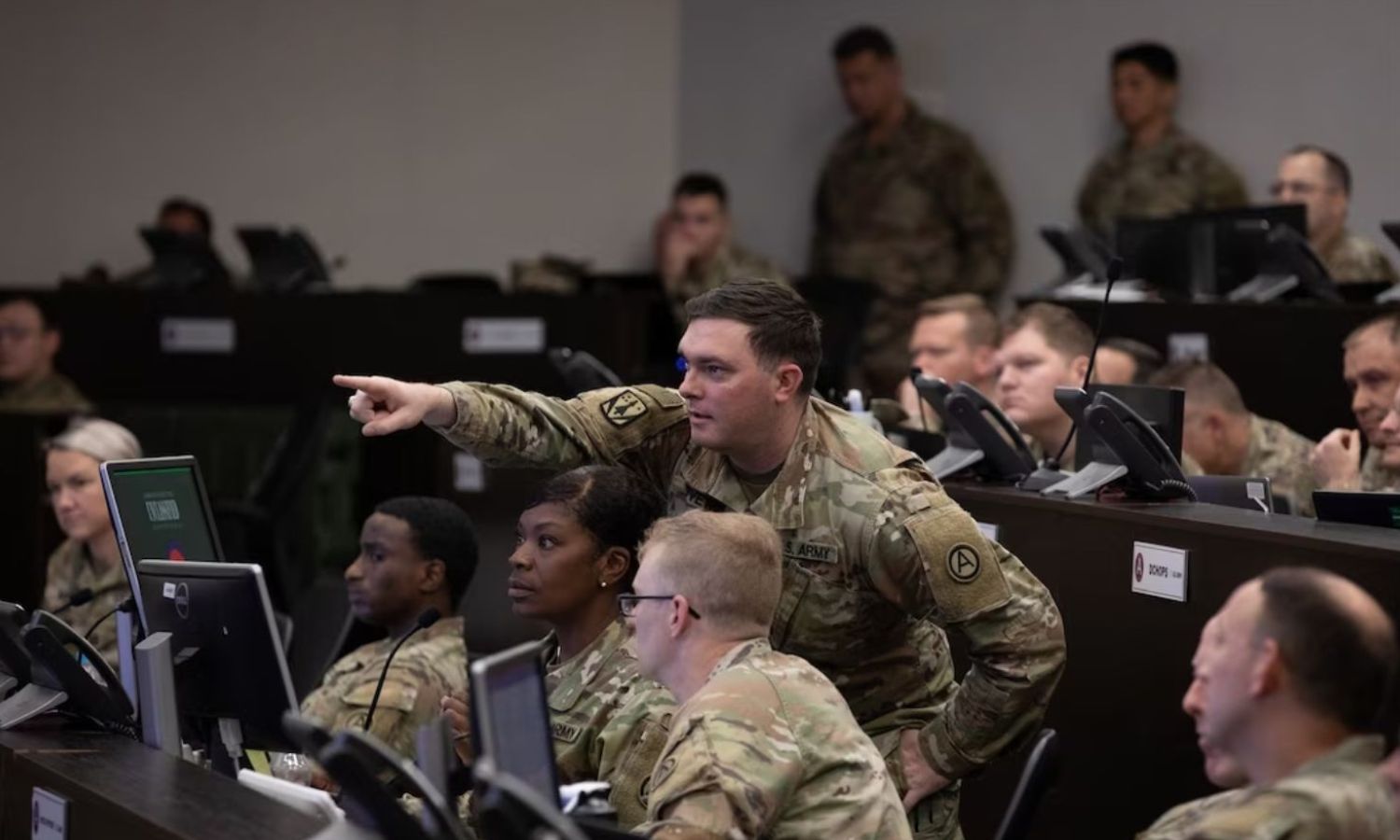
US Army officers and soldiers during joint exercises with the Jordanian Army – September 2023 (US Central Command)
Iran denies and distributes roles
Just as the United States has its calculations internally and externally, the Iranian side has its calculations in return, especially with its portrayal as “the leader of the axis of resistance in the face of Israel.”
The Iranian game being followed is accompanied by an official denial of any responsibility for targeting American military interests or bases in the Middle East. Tehran’s ambassador and permanent representative to the United Nations, Amir Saeed Iravani, previously said, on November 7, that his country has never participated in any action or an attack against American forces in Syria and Iraq.
Iravani’s statements came in response to a letter written by the United States to the Security Council, accusing Iran of acting against its forces in Syria and Iraq, according to what was reported by the Iranian Mehr Agency.
Iravani sent a letter to the Secretary-General of the United Nations, Antonio Guterres, in which he stated that the United States is trying to “legitimize its illegal military actions in Syria” and that allegations that Iran is participating in attacks on American bases in Syria and Iraq are baseless and aim to “Justifying the United States’ continued violation of international laws and the United Nations Charter in Syria.”
Iranian Foreign Minister Hossein Amir Abdollahian previously denied that Tehran was responsible for these attacks.
Official denial and targeting on the ground
The official Iranian denial does not mean that Tehran is not exploiting Washington’s current circumstances in the region, and exploiting the latter’s desire not to escalate.
Writer and researcher Marwan Farzat told Enab Baladi that the targeting of American bases in Syria and Iraq by arms and militias affiliated with Iran reflects the latter’s desire to send a message of its ability to expand the circle of conflict and shake the region at any moment.
These attacks do not lead to significant damage to American bases, which opens the door to questions about their feasibility and the possibility of considering them as a political game to put pressure on Washington rather than real involvement in the current battles against Israel.
According to political analyst Dr. Nasr al-Youssef, at least according to what Washington announces, the damage is very minimal, which means that these targets are intended to convince the popular incubator of the so-called resistance axis that the axis countries do not stand idly by regarding what is happening between two components of this axis (Hamas and Islamic Jihad) and Israel.
In practice, the targeting of American bases began before the Israeli military operation against Gaza, but its pace accelerated after October 8, which reflects the change in the game between Washington and Tehran in Syria and Iraq.
Iranian politicians are not stupid, and they understand the American messages; therefore, they practice a moderate policy through harmless targets that are tolerated without actually engaging in the war.
Dr. Nasr al-Youssef – Syrian political analyst
In conjunction with the Israeli military operations, Washington and Britain announced the sending of aircraft carriers and submarines to the coasts of the Mediterranean.
American officials also repeatedly warned their Iranian counterparts against interfering in the ongoing battles in Gaza. Israel, through the official spokesman for the occupation army, Daniel Hagari, also accused Tehran of providing direct support for Hamas in the Battle of Al-Aqsa Flood.
The arrival of aircraft carriers, the bridge of American weapons to Israel, sends a clear message to Iran that the latter cannot ignore.
According to al-Youssef, Iranian politicians are not stupid, and they understand the message; therefore, they practice a moderate policy through harmless targets that are tolerated without actually engaging in the war.
Are targets evolving and clashes expanding?
The messages exchanged on the ground between Tehran and Washington, the complexities of the region, Israel’s continuation of its military operation, and the high number of civilian casualties are factors that may change the rules of the current game between the two parties, according to the strengths and weaknesses of each of them and the potential losses.
The United States has military bases in Saudi Arabia, Qatar, Kuwait, and the Emirates, and the Fifth Fleet is stationed in Bahrain. It is the largest naval military base in the Middle East and consists of aircraft carriers, submarines, and thousands of US Navy soldiers.
Last September, Washington announced the signing of an expanded security agreement with Bahrain. It also repeatedly announces its “commitment to the security of the Arabian Gulf region,” and holds periodic meetings with military leaders in these countries to discuss military matters, including American armament.
The US Fifth Fleet’s area of operations covers about 2.5 million square miles of water area, including the Arabian Gulf, the Gulf of Oman, the Red Sea, parts of the Indian Ocean, and three points in the Strait of Hormuz, the Suez Canal, and the Bab al-Mandab Strait.
On July 21, the US Central Command (CENTCOM) announced an increase in its military forces in the Middle East in response to Iran’s maritime “violations” in the area where US forces operate.
While Iran possesses long-range ballistic missiles and drones, in addition to thousands of fighters deployed in Syria, Yemen, Iraq, and Lebanon, which means that it has the ability, if the clashes expand, to target American interests, at least in the Straits of Hormuz and Bab al-Mandab, and military bases in the Gulf states.
It is not clear, at the moment of preparing this file, what could prompt Tehran to expand clashes and targeting against American forces in the region, but Le Figaro newspaper said on October 17 that two basic factors determine the timing of Tehran and Hezbollah’s official entry into the war: the ground invasion, and the extent of Hamas’ losses.
If the movement’s losses are heavy and it is on the verge of a defeat that threatens its existence, the battle will turn into a battle for the existence of the Iranian axis.
The French newspaper added that Tehran divided responsibilities and roles on the Syrian and Lebanese fronts according to circumstances and the development of events, but the Syrian front is the most important, and the first spark may come from it.
In his interview with Enab Baladi, political analyst Dr. Nasr al-Youssef believes that these targets will remain at this level and may develop a little but will remain “not painful” so that the Americans do not get the impression that the axis of resistance countries have actually engaged in the conflict.
Therefore, the targeting will remain within this controlled framework, but if Israel continues to kill at this pace, does not respond to Washington’s calls to observe international humanitarian law and the laws of war, and does not provide Gaza with the basics of life, such as water, electricity, and fuel, then the escalation could increase slightly by the Iranian axis with an implicit agreement with Washington, the latter will allow it to intensify its targeting so that Israel will respond to America’s advice, according to al-Youssef.
He added that despite all this, things will remain under control because the United States has pushed this massive force into the region, not to help Israel get rid of Hamas, which does not need an aircraft carrier and submarines but rather to warn everyone who thinks about direct intervention in the conflict.
For his part, researcher and writer Marwan Farzat said that the possibility of the clashes expanding is possible, and the military shows of force that we are witnessing from all parties are in fact to control the rhythm of the battle and limit it to inside Gaza only, and prevent its expansion to neighboring countries, as no one wants war and no one has an interest in entering into a war that drains strength, capabilities, and economy, even if victorious in the end.
Farzat believes that the circumstances in the next stage will lead to a deal between the Iranians and the Americans to end the Gaza war, as they are the two parties to the real conflict, according to his opinion.
Washington is trying to prevent escalation and Iran’s joining of the battles, and according to an analysis published by the Washington Institute for Near Eastern Studies on October 13, the entry of Iran, Hezbollah, and the militias affiliated with Tehran in Iraq and Yemen, and giving a regional character to the war, will lead to disastrous consequences for Israel and Washington’s other partners.
The military shows of force that we are witnessing from all parties are in fact to control the pace of the battle and limit it to Gaza only, and prevent its expansion to neighboring countries. No one wants war, and no one has an interest in entering into a war that drains forces, capabilities, and economy, even if victorious in the end.
Marwan Farzat – Syrian analyst
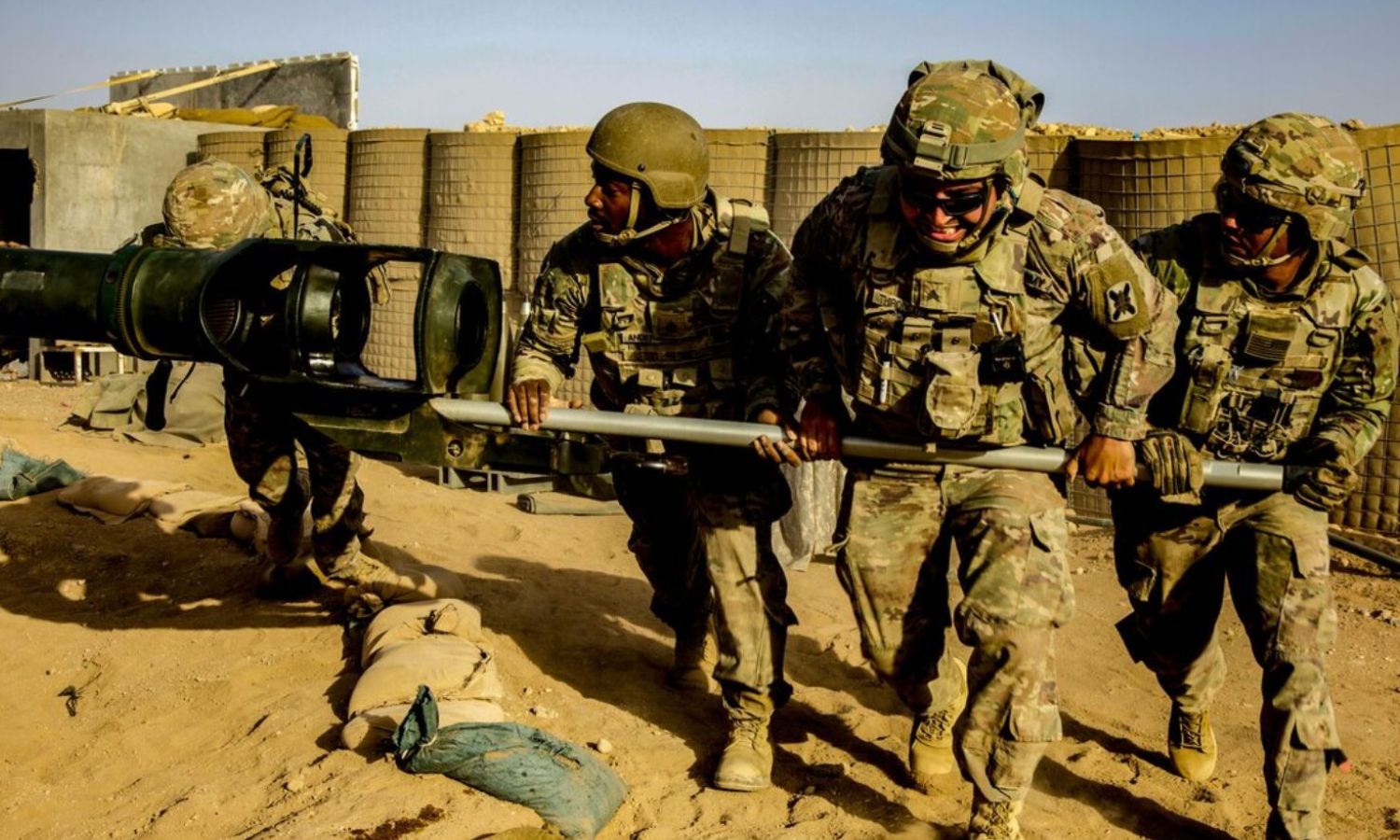
A group of American artillery forces training to fire howitzers artillery weapons in Syria – June 14, 2023 (CENTCOM)
Russia settling scores with US in Syria for its support for Ukraine
Amidst the exchange of messages between Tehran and Washington, an old enemy of the latter appears on the scene of current events, Moscow, which, in addition to the decades-long history between it and Washington, has more conflicting interests in the current period with the latter.
This conflict is due to two main factors: the first is preserving Moscow’s interests in Syria and the warm waters in the Mediterranean Sea, which witnessed the arrival of American aircraft carriers, and the second is an attempt to put pressure on Washington in response to the latter’s standing by Ukraine in repelling the Russian invasion, since February 2022.
Since the increase in targeting, Russia has not announced any public support for Tehran, but it has taken a position different from the positions of Western countries regarding the Israeli military campaign in Gaza since the first days.
Moscow may seek to directly support Tehran, through certain logistical facilities, and relieve pressure on it in its war against Ukraine.
Syrian affairs researcher Lund believes that Russia is benefiting from the conflict surrounding Gaza as it pulls Western attention and resources away from Ukraine.
It also allows Moscow to score easy points in the Arab world by opposing Israel’s bombardment of Gaza and its blockades on food and aid deliveries.
This reflects the usual roles in Syria, where the United States and the European Union call for international law to be respected and for humanitarian ceasefires to allow aid convoys to reach hungry civilians, while Russia only wanted to talk about terrorism and kept vetoing UN resolutions. Now it’s the other way around, and the Kremlin clearly loves it, according to Lund.
Russian support does not necessarily include providing weapons to Iranian militias in Syria and Iraq, but it can be provided in the form of facilitating their movements.
Journalist and expert on Russian affairs Raed Jabr, said in an interview with Enab Baladi that Russia views the American presence in Syria and Iraq as an illegal occupation, and it is natural to resist it.
This means encouragement by it of any targeting of American forces, and this support and encouragement comes through Russian diplomacy, which has been very active.
Jabr believes that Washington’s greater involvement in confronting a situation of this kind will have an impact on American policy, meaning that the Israeli war has led to talk of a broad American return to the region after talk of Washington’s withdrawal and that Moscow is monitoring the military and political return by pressuring the countries of the region and targeting its bases.
Russian effort to shift Western support towards Israel
Russia launched a ground invasion against Ukraine in February 2022, under the pretext of the latter’s attempts to join NATO and the European Union, which Moscow sees as a direct threat to its national security, and Washington’s access to its land borders.
Washington and the capitals of countries in the European Union quickly announced support for Kiev, militarily and financially, and received Ukrainian refugees, and officials at the highest levels visited Ukraine.
Russia may see targeting US bases in Syria and Iraq as an opportunity to reduce media pressure and direct Western resources towards Israel instead of Ukraine.
Therefore, these attacks may be encouraged in this regard, especially with American officials raising the issue of a peace agreement between Moscow and Kiev, according to what was reported by the American network “NBC News” on November 4 of this year.
According to the channel, officials from 50 countries that support Kiev held talks with the Ukrainian government in this regard.
While Raed Jabr, in his interview with Enab Baladi, does not believe that Russian support for Tehran comes as a way of relieving pressure on the Ukrainian front with the ongoing developments in the region and confusing Washington with that, which is a more important matter for Moscow, Lund believes that Moscow does not play a major role in the Gaza war or the targetings against US bases in the region.
He added that Russia does not appear to have the influence or resources available, although, as a permanent member of the Security Council, it will always have some say over what happens diplomatically, as it plays a role in Syria, and if the conflict spreads to Lebanon we could easily see a conflagration in Syria as well, which forces Russia to make some quick and hard decisions about how to invest its political and military capital.
With the presence of many of its military forces in Ukraine, Russia is no longer able to confront the escalation by sending more forces and aircraft to the region in the event of an Israeli, Turkish, or even American challenge to the status quo in Syria.
However, none of these governments want open conflict with each other, and it is possible that Russia’s limited presence will be enough for its purposes, Lund said.
Jabr told Enab Baladi that the Iranian militias are not seeking military assistance from Moscow, but the latter may provide certain facilities, such as landing an Iranian plane at the Hmeimim military base or assistance by sending weapons to the Lebanon front.
These are stories that have not been proven, and if they are proven, it means that Russia is facilitating the transfer of military equipment to the militias to target American bases.
if you think the article contain wrong information or you have additional details Send Correction
النسخة العربية من المقال
-
Follow us :
Most viewed
- 311 casualties among government forces and civilians in Syrian coast
- Al-Sharaa and Abdi reach agreement on merger of SDF into Syrian state
- Syrian Defense Ministry appoints "Abu Amsha" as Hama Brigade commander
- Did Syrian state fall into coastal ambush?
- Rights organization documents government and civilian deaths in Syrian coast












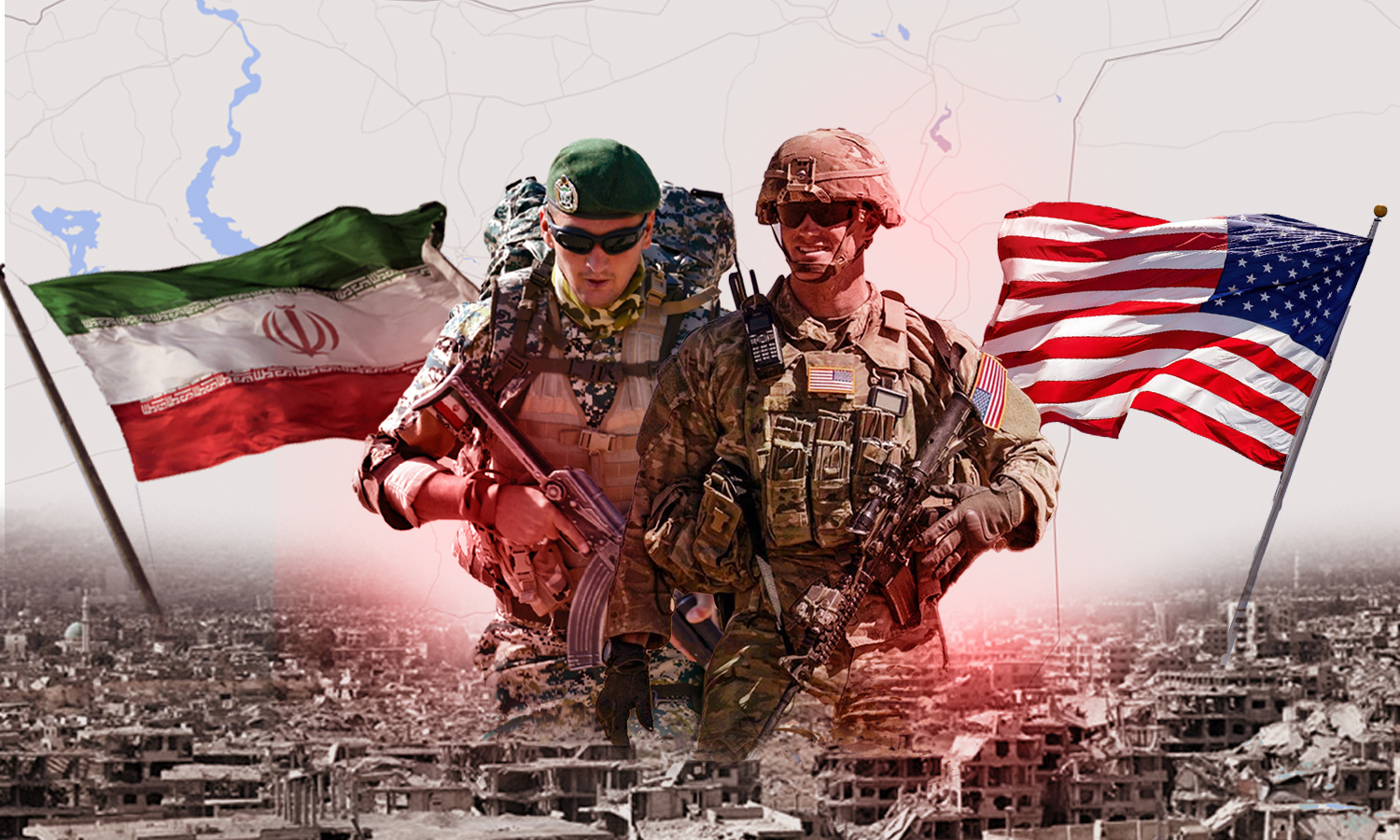
 Two American and Iranian soldiers in Syria (Edited by Enab Baladi)
Two American and Iranian soldiers in Syria (Edited by Enab Baladi)





 A
A
A
A
A
A

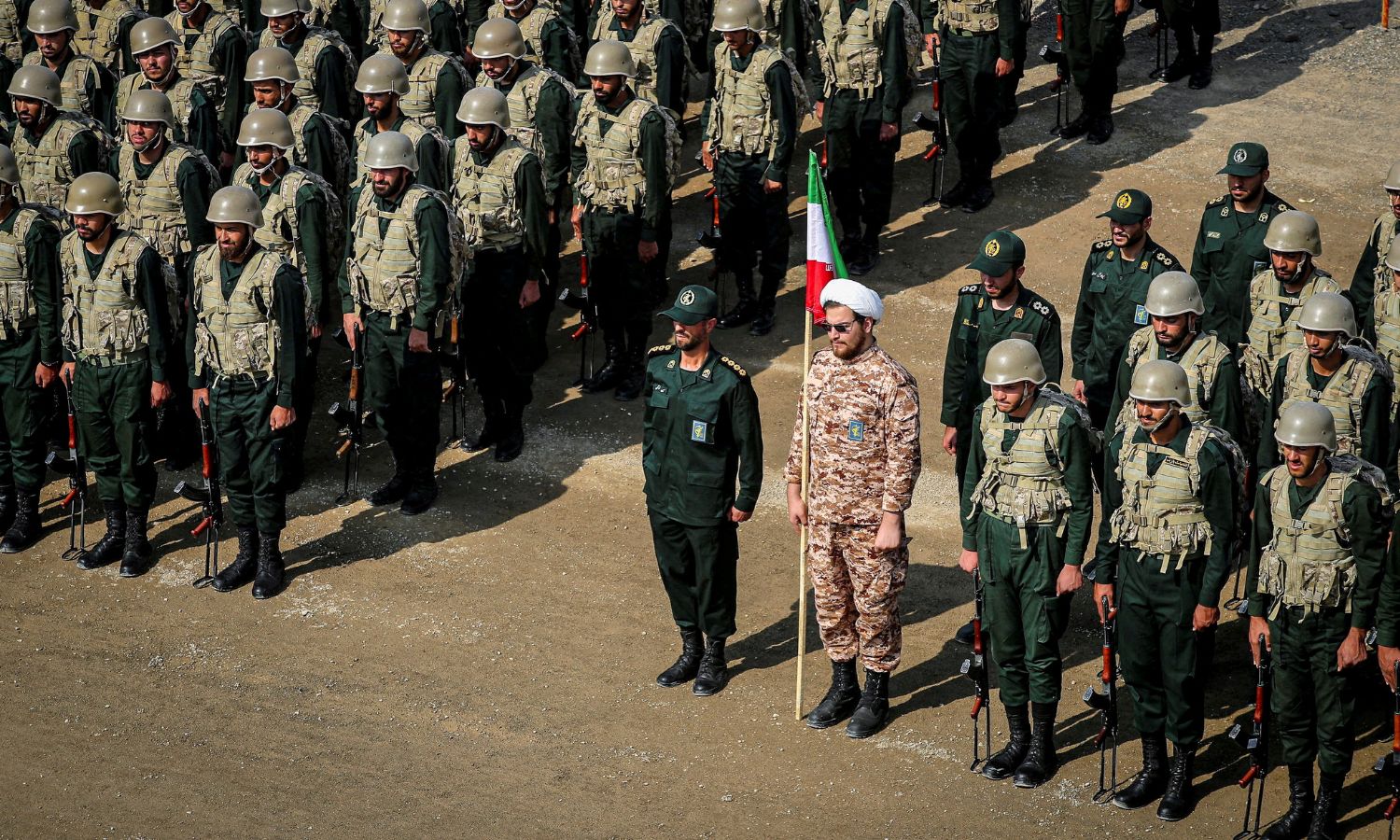
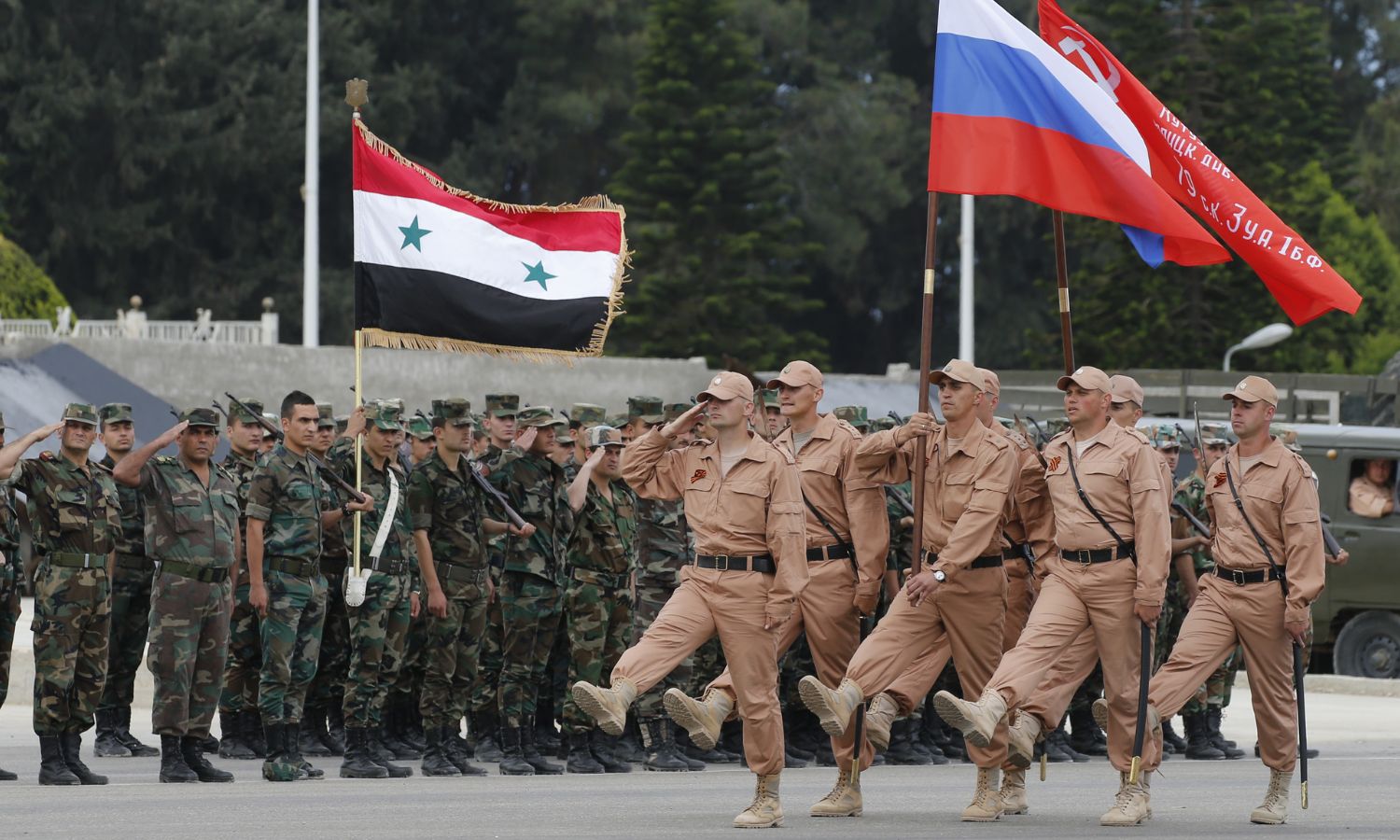


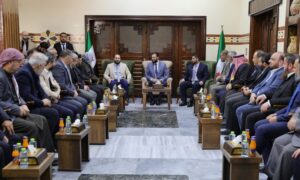
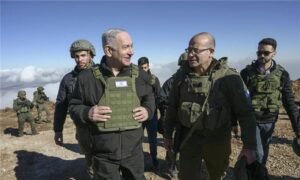

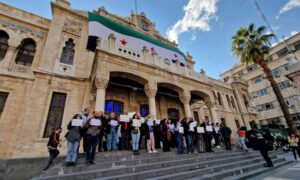
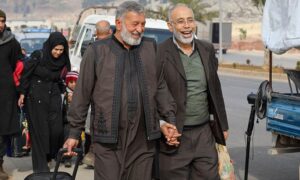
 More In-Depth
More In-Depth